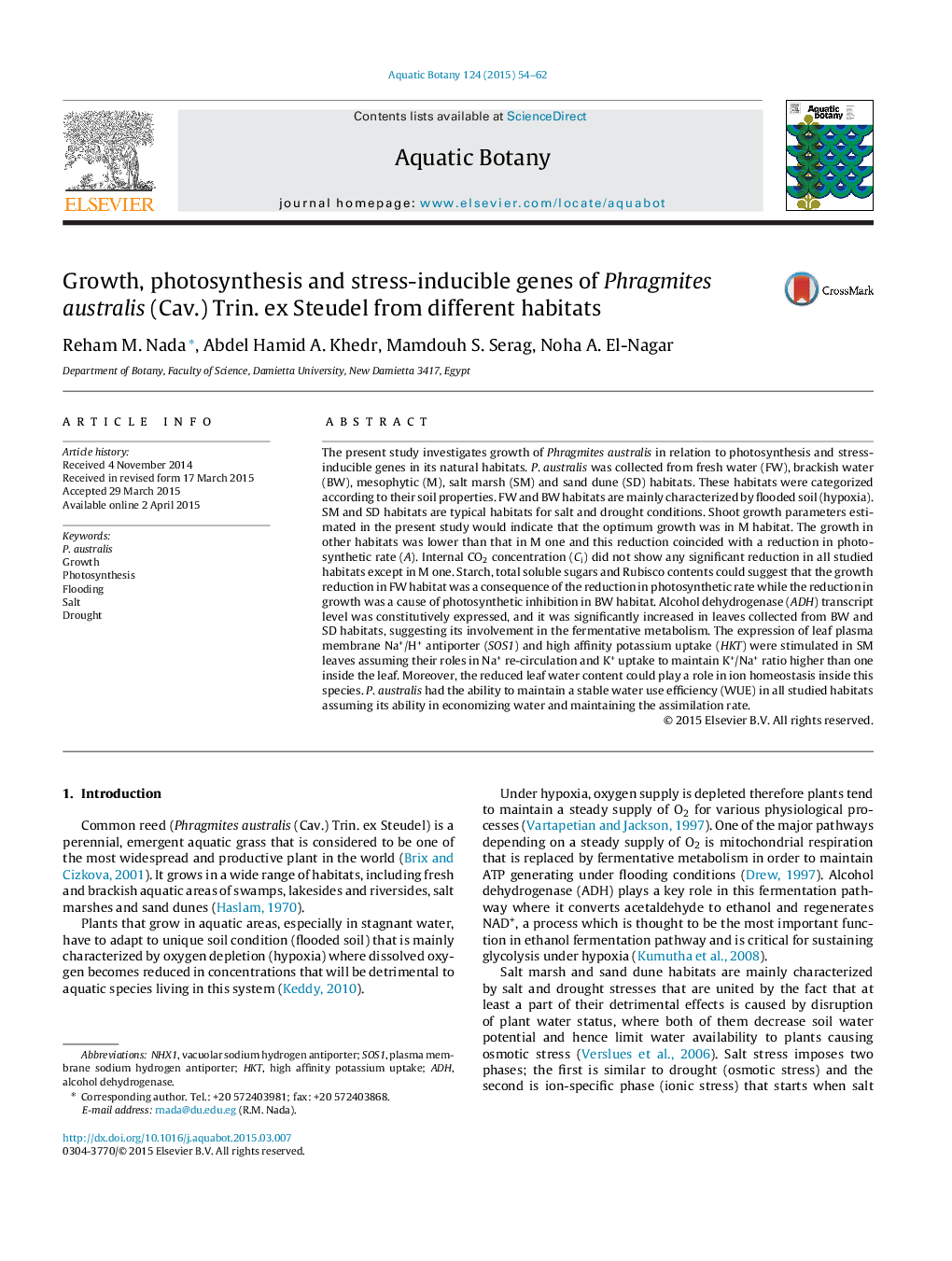| Article ID | Journal | Published Year | Pages | File Type |
|---|---|---|---|---|
| 4527657 | Aquatic Botany | 2015 | 9 Pages |
Abstract
The present study investigates growth of Phragmites australis in relation to photosynthesis and stress-inducible genes in its natural habitats. P. australis was collected from fresh water (FW), brackish water (BW), mesophytic (M), salt marsh (SM) and sand dune (SD) habitats. These habitats were categorized according to their soil properties. FW and BW habitats are mainly characterized by flooded soil (hypoxia). SM and SD habitats are typical habitats for salt and drought conditions. Shoot growth parameters estimated in the present study would indicate that the optimum growth was in M habitat. The growth in other habitats was lower than that in M one and this reduction coincided with a reduction in photosynthetic rate (A). Internal CO2 concentration (Ci) did not show any significant reduction in all studied habitats except in M one. Starch, total soluble sugars and Rubisco contents could suggest that the growth reduction in FW habitat was a consequence of the reduction in photosynthetic rate while the reduction in growth was a cause of photosynthetic inhibition in BW habitat. Alcohol dehydrogenase (ADH) transcript level was constitutively expressed, and it was significantly increased in leaves collected from BW and SD habitats, suggesting its involvement in the fermentative metabolism. The expression of leaf plasma membrane Na+/H+ antiporter (SOS1) and high affinity potassium uptake (HKT) were stimulated in SM leaves assuming their roles in Na+ re-circulation and K+ uptake to maintain K+/Na+ ratio higher than one inside the leaf. Moreover, the reduced leaf water content could play a role in ion homeostasis inside this species. P. australis had the ability to maintain a stable water use efficiency (WUE) in all studied habitats assuming its ability in economizing water and maintaining the assimilation rate.
Related Topics
Life Sciences
Agricultural and Biological Sciences
Aquatic Science
Authors
Reham M. Nada, Abdel Hamid A. Khedr, Mamdouh S. Serag, Noha A. El-Nagar,
